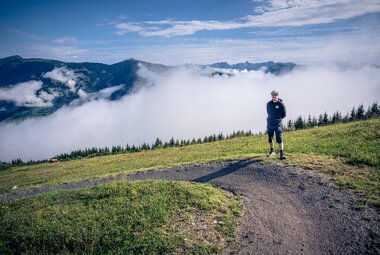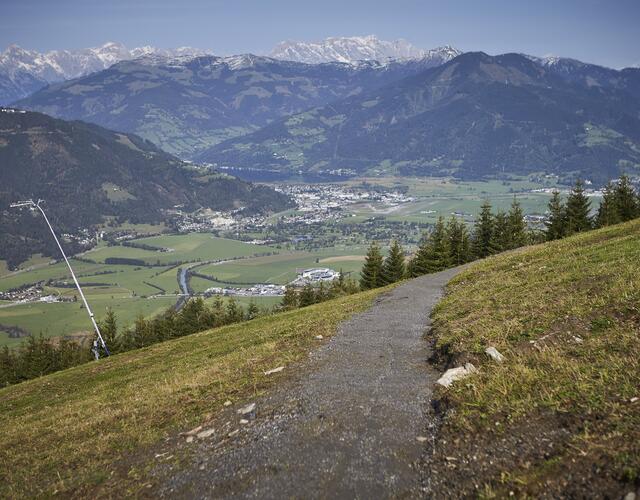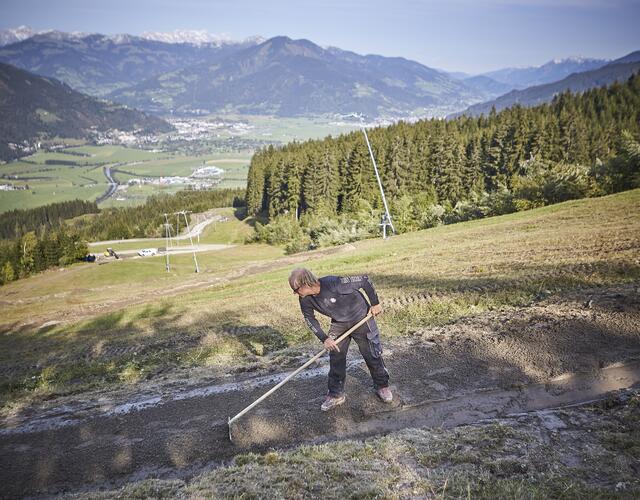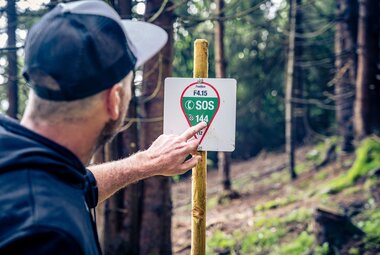A look behind the scenes of MTB trail building
The Maiskogel trail offers the perfect terrain for riders who want to prepare themselves for the more challenging downhill courses on the Kitzsteinhorn. The 4.6-kilometer-long run starts at the MK Maiskogelbahn top station and leads down a gentle descent with some waves and turns to the Stanger middle station. Roland Hofer works for the trail building company Shape Syndicate and tells us why sustainable construction is so important to him as a trail builder.
I'm observing a biker at the trail's starting point as I'm sitting in the grass. He runs smoothly over the waves and brings his bike to a stop directly in front of me. I detect a broad smile underneath his full face helmet. It's trail builder Roland Hofer, who manages the Maiskogel trail together with his team. "I've been testing the trail myself this morning before it's opened to guests", Hofer beams, having obviously enjoyed the early-morning ride. He quickly takes off his helmet and protectors and sits down next to me amid blooming alpine flowers.
When negative is actually positive
The first section of the trail is located where skiers and snowboarders ride down in winter. "Um, where exactly?", I ask, for the trail is not visible when looking up the hill. "Mission accomplished", Roland laughs, and adds: "Only a trail that blends into the landscape and is not visible from below is a good trail from a trail builder's perspective." We take a few steps up the slope while Roland explains: "Here, in the slope area, the trail was built using the negative construction technique, which means that the trail is actually below slope level. That way, snow for the slopes can be made resource-efficiently in winter. Moreover, the trail blends perfectly with the terrain. Further down, the trail runs through the wood again. There we could build all the waves, turns and gentle descents above ground level."

Good planning is half the ... maintenance
The trail looks as if it had just been built. No ruts or skid marks are in sight. "That's mainly owing to maintenance. Sladjan Zaric is responsible for the trail and checks it every morning before it's opened to the public. Especially after heavy rain or storms it's crucial to make sure the drains are clear." We stand at such a section when Roland explains: "The secret behind a trail's longevity lies in its planning and construction. This trail has a moderate descent and is therefore less exposed to erosion."
To me as a trail builder, the most beautiful trail is not only nice to ride on but also blends into its surroundings perfectly.
From a freerider's perspective, you see waves and turns. Hikers who let their gaze wander over the blooming alpine pastures, on the other hand, will barely spot the trail. And that's how it's supposed to be, as Roland explains: "The trail was built in September 2020 with my Shape Syndicate team. We all have agricultural know-how and a strong sense of sustainability. We got Martin Kyek from the Institute of Ecology on board to assist with building the trail. He was satisfied with our construction technique. During the so-called "waseln" process, grass is carefully removed with a digger and then put into the hill again. That way, the turf can regrow instantly and with the help of grass seeds typical of the region, the terrain will be intact by the time of the opening in spring."
Winter as construction helper
On our stroll along the berm, we meet two employees in the process of mowing the course. Roland laughs: "The route is renaturalized so well that the long grass has to constantly be removed from the trail edges with a trimmer." A cow moos to us from behind the electric fence while Roland explains: "We also check the fences in order to prevent cows from getting onto the trail. We are committed to juggling alpine farming with touristic use." Roland has been acquiring know-how in trail building over the last 15 years, which guarantees perfect results. "For the Maiskogel trail, we've mixed soil with gravel and compacted that with a vibratory plate. But in the end, the main contributor to a trail's longevity is frost and snow pressure in winter. That's why we usually build in fall and give the trail time to settle until spring." We head back to the starting point, where our bikes are waiting. With a broad smile on our faces, we ride down to the finish line at the Stanger middle station. While Roland properly records his test ride, I take advantage of the early day to get into the cable car and enjoy the ride down the trail once again.
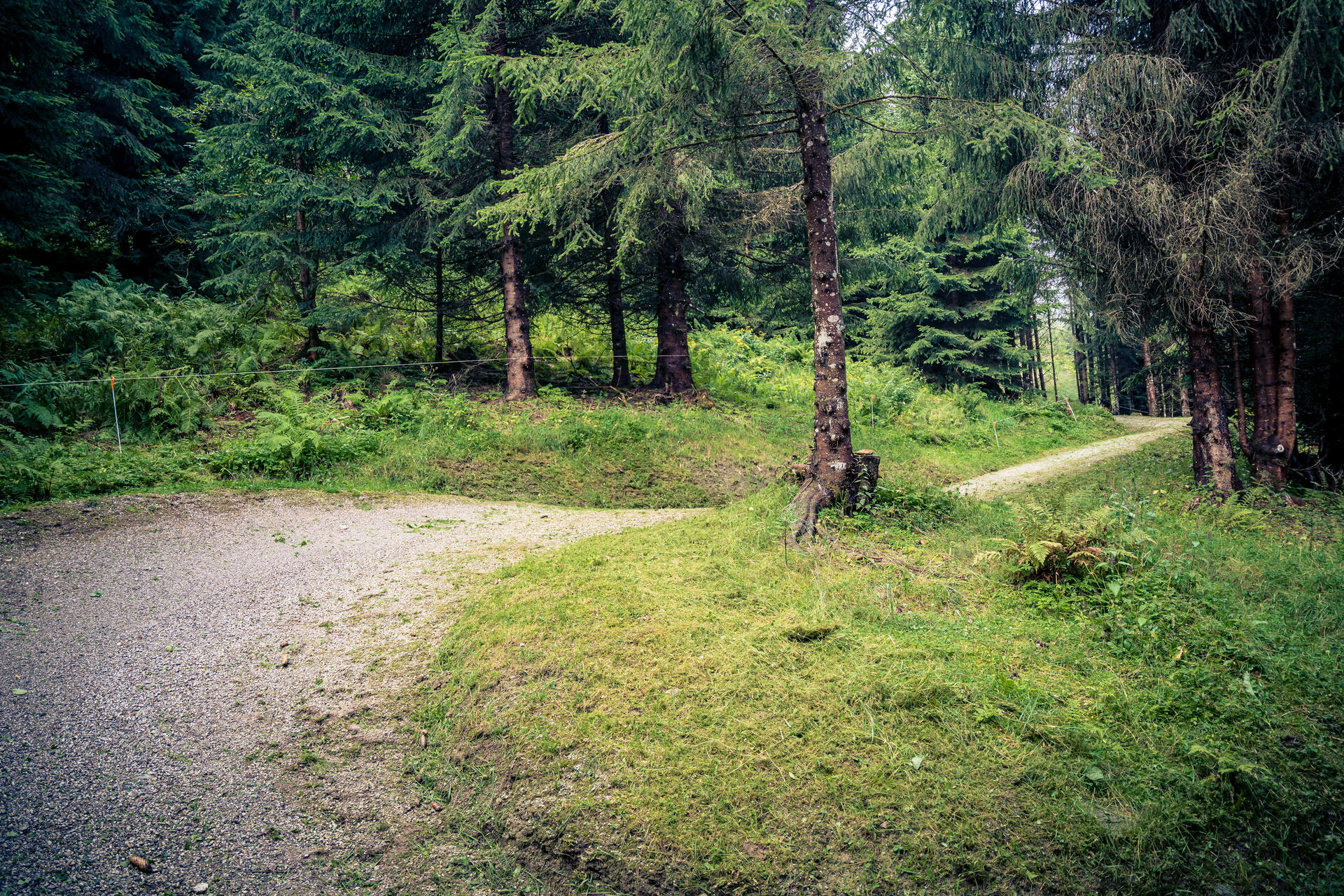
Maiskogel Trail Facts
- Built in: 2020 by Shape Syndicate
- Length: 4.6km
- Ideal for: beginners, families
- Features: gentle descent, wide turns, waves
- Starting point: MK Maiskogelbahn top station on 1,570m
- Finish line: MK Maiskogelbahn middle station (Stanger) on 1,137m
- Project partner: Tourism Association Kaprun



